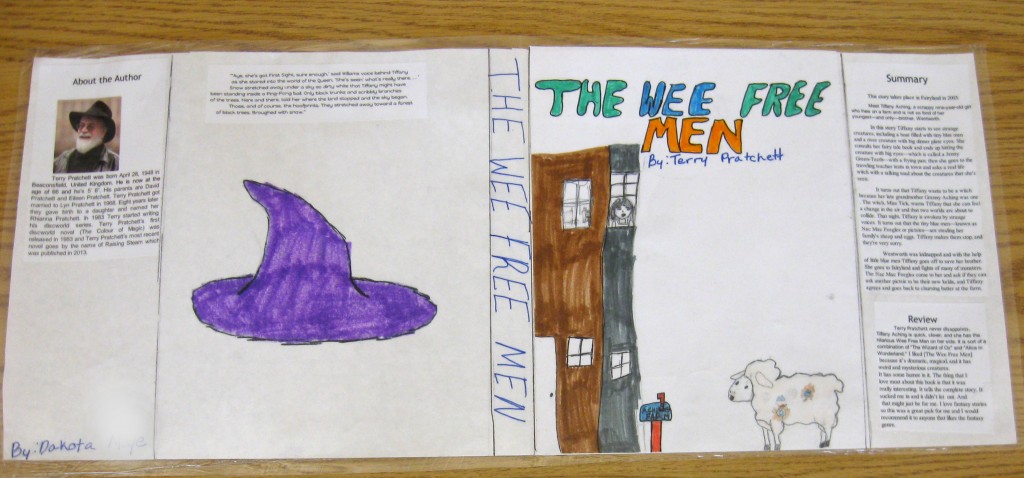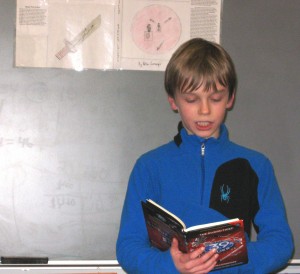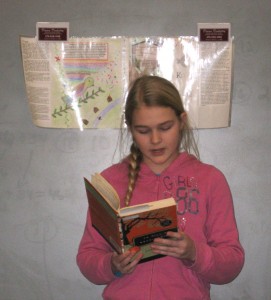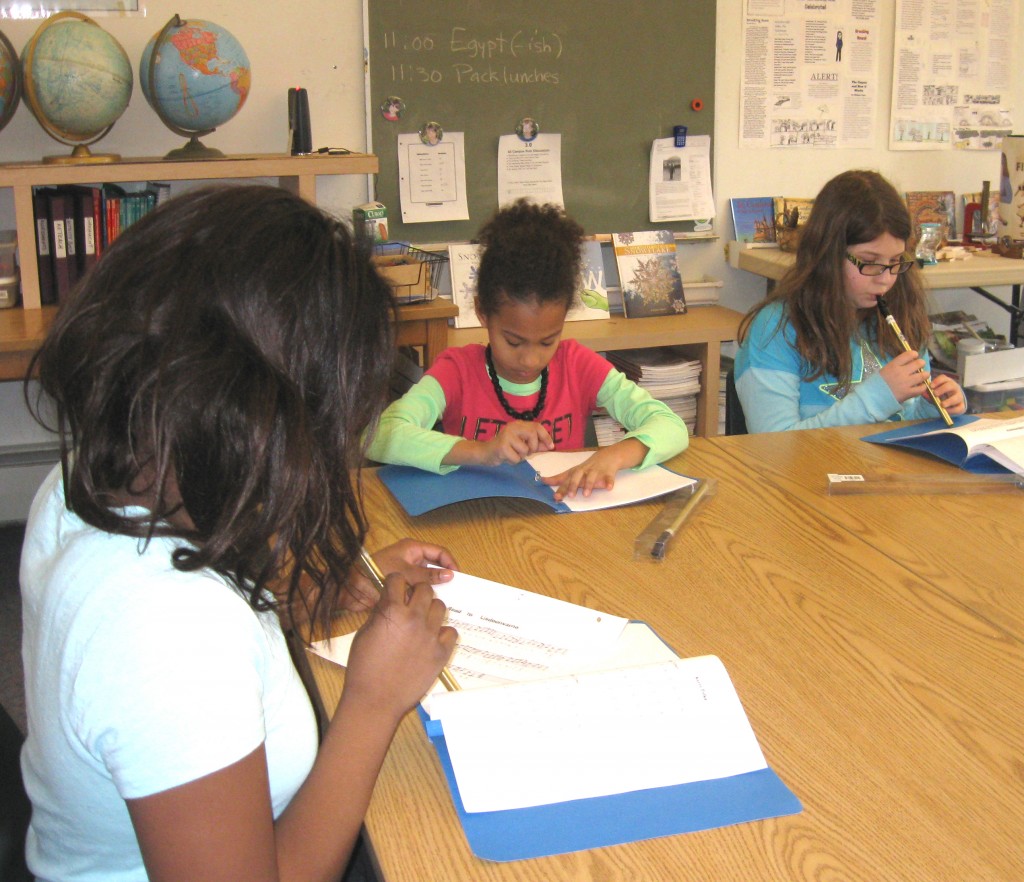Our book project came to an end this week with book talks. Students told us a bit about their book’s author, the plot, and their opinion. They selected a representative passage to read to the group and then answered questions. The variety of genres was impressive: humor, mystery, fantasy, and realistic fiction were all represented. A few chose books that had been offered for our book groups but which they had not read at that time. It was clear that most students were very happy with their selections. It was also clear that some had planned and practiced their presentation carefully, while others apparently thought it would happen by magic. Some followed the book talk directions well, while others seemed to forget that they had written directions on their Google drive. We have presentations coming up again in about 3 weeks when they finish their Life Skills 101 adventure. We have suggested that this is another opportunity to follow the directions and enjoy being really prepared.
The book jackets will be on display for a while in the corridor between our room and Diane’s. Students started this part of the project by measuring and cutting large paper to the required size, then marking off the sections for the end flaps, front and back panels, and spine. They soon realized that it took two measured points to make sure their lines were straight. We did a lesson on how to make light guide lines for lettering as well, which some students used and others decided to do without. Their edited text for the summary, review, author information, and “teaser” for the back panel were glued in place. Some did their illustrations directly on the paper, while others did a separate drawing and glued it onto the appropriate panel. Finally, Jeri ran the finished dust jackets through the laminator to create a more durable final product.

We introduced Life Skills 101 to the group at the end of the week. This has become a traditional activity each year. Students who had done it last year were able to explain it to the rest: You work on learning something that you will need to know when you are older and living on your own. It’s usually something that helps your family. We added that it wasn’t necessarily going to be fun, in the way that we expect the Personal Projects to be when they are done in May. But it was going to be something that could make them feel more responsible and independent, that might take some work off the hands of the adults at home, and that they might decide to continue doing after the project was over in 3 weeks. We hope that students will talk their choices over with their family this weekend, settle on what they are going to learn, and be ready to hand in their plan by Wednesday morning. The project is meant to add a new skill or expand an existing one — doing the laundry, planning healthy meals, taking over part of the cleaning, and the like. They’ll write up their progress once a week in a journal on their Google drive and share their adventures with the group when the three weeks come to an end. Copies of most of the handouts and more information are available on our homework blog post for February 6.
We started playing our new pennywhistles this week. This is connected to our upcoming social studies unit on the ancient Celts and Romans, which will begin on Monday. Our study of the Celts will focus primarily on those who lived in Ireland, Britain, and Gaul (France), although Celtic peoples spanned Europe from Turkey to the Iberian peninsula. Like the dulcimer, the pennywhistle (or tin whistle) is a folk instrument that has been invented by many different cultures and played in a wide range of styles around the world. We’ll be playing a lot of relatively modern Irish and English tunes and songs, along with some of the songs we enjoy in our Wednesday morning sing. Because our group has just finished a unit on recorder-playing with Diego, they are off to an excellent start.
The whistle is simpler than the recorder because there are only 6 holes to cover (three for each hand). For some, the most challenging part is hand position. Although either hand can be on top (unlike recorder), getting the fingers aligned properly is not easy for everyone. Fingers should be at right angles to the line of the whistle, forming an “L” shape. The finger joints should be basically straight, not curved, and the holes are covered by the center of the pad of the first joint, not the finger tip. The top hand supports the whistle with the thumb. The bottom hand supports the whistle with the thumb (behind) and the little finger (resting on the tube below the bottom hole). Fingers that are not covering holes should be poised in the air just high enough above their designated hole to allow the sound to be true and clear. Finally, the whistle should be placed in the center of the lips, not offset into a corner of the mouth.
Parents might be able to help their child form good habits early on by observing them play (if they choose to bring their instrument home) and reminding their child about these things. Also, because we will be doing short lessons and/or practice sessions almost every day, it’s important for students to have their books and whistles at school. They are welcome (but not required) to take them home, but it’s essential that they bring them back. Here again, some parental help with remembering this would be appreciated.
We have quite a few skilled musicians in the group who play other instruments. Although we are not going to be explicitly teaching students to read music better than they already may, we will be presenting a lot of the tunes with standard notation as well as a numbering system, and we’ll point out some of the information in the notation that is not present in the number code. We’ll be encouraging students to learn the tunes so they aren’t dependent on the written pages. You can’t really play the music if you are focused on reading the notes. We’ll be offering some more difficult tunes to students who find our basic repertoire fairly easy to master, some in the form of duets with a challenging second part.
Students were delighted to learn that the instruments are theirs to keep at the end of the year, if they wish. We will be making protective cases for them next week from pvc pipe.
We have two different things going that involve dramatic performance. We have started work on a play: On Camera, Noah Webster. This is a humorous parody of a television news and entertainment program; the theme is language. Synonyms, vocabulary, spelling, contractions, and more are explored in segments that are tied together through the commentary of the two program anchors. This is the perfect class for this particular script — there are many opportunities for them to add to and modify their lines, and the more they are willing to ham it up, the funnier it will be. Students have had some time to familiarize themselves with their parts, and we will start rehearsal in earnest next week. We have not yet set a performance date, but there will be a daytime and an evening presentation sometime before parent conference week in March.
The second acting project is less ambitious, more self-determined, and is a final wrap-up of our month of building and tinkering. We have asked students to create a silly commercial for an invention. They have all chosen something and are now working on creating simple scripts. Although we are encouraging them to make it funny, we also want the commercial to explain the problem or need that the invention addresses and also give us its history — who invented it, what preceded it, and the like. We hope to have at least some of them ready to perform at our assembly on February 20th.




